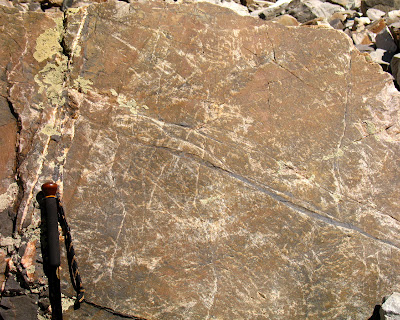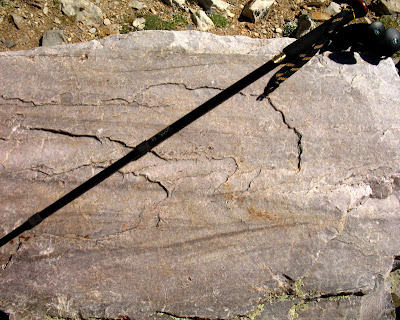Above, a couple pictures of cross bedding in the Prospect Mountain Quartzite - once a sandstone, now metamorphosed to a quartzite. Cross bedding can tell a geologist which way was up (if the rocks are in place in an outcrop instead of lying every which way on some rock glacier!). Which way is up in photos #1 and #2? Or are the boulders too small to determine the orientation?


Photo #5
Photo #3 shows some faint, criss-crossing striations or grooves in a thin black shale bed remaining on one side of a quartzite boulder. Photo #4 shows similar but deeper striations or grooves on one quartzite boulder, enlarged in Photo #5. What does this mish-mash of orientations, seemingly quite random, tell us?
As usual, click to enlarge photos.
All photos are from the rock glacier on Wheeler Peak.


4 comments:
Hard to tell in photo 1. It looks to me like the horizontal beds near the bottom of the photo are truncated by cross beds... which means that 'up' is toward the bottom of the photo. Maybe.
Number 2 - 'up' is toward the top of the photo.
Perry, I agree that in photo #1 it's hard to tell - up probably is to the bottom of the photo, for the reason you noted.
In #2, up looks to be to the top of the photo, just like you said.
as for the criss-cross features, are those paleo-critter tracks? if so then it probalby means that we are looking at the bottom of a layer.
geologyjoe, I'm not sure those are fossil marks - I was thinking they are probably from the boulders banging around in the rock glacier. I'm not sure if there is a word for that kind of thing or not. And I could be wrong! :)
Post a Comment